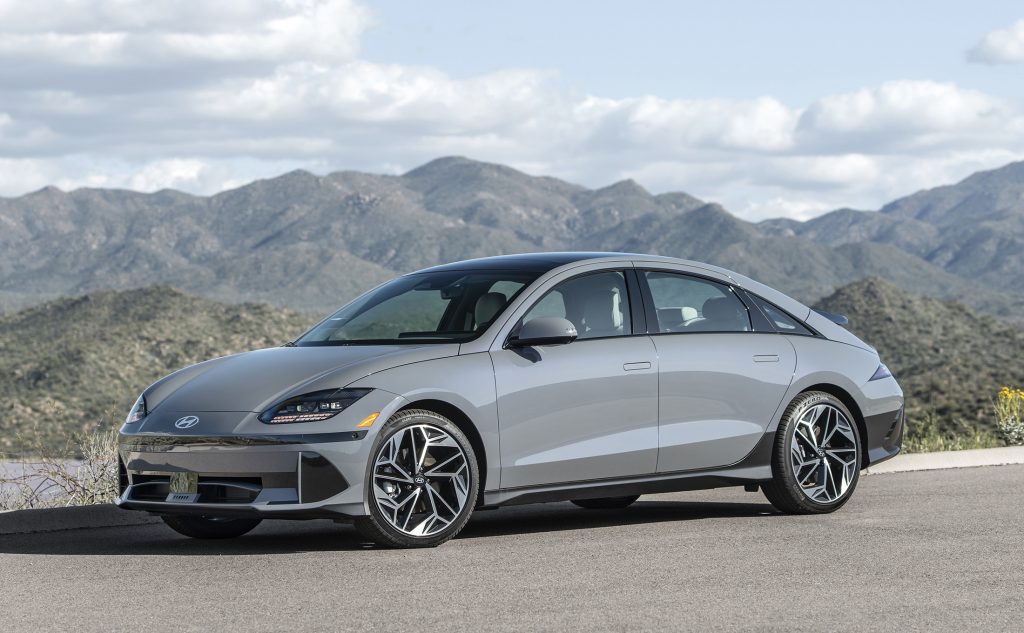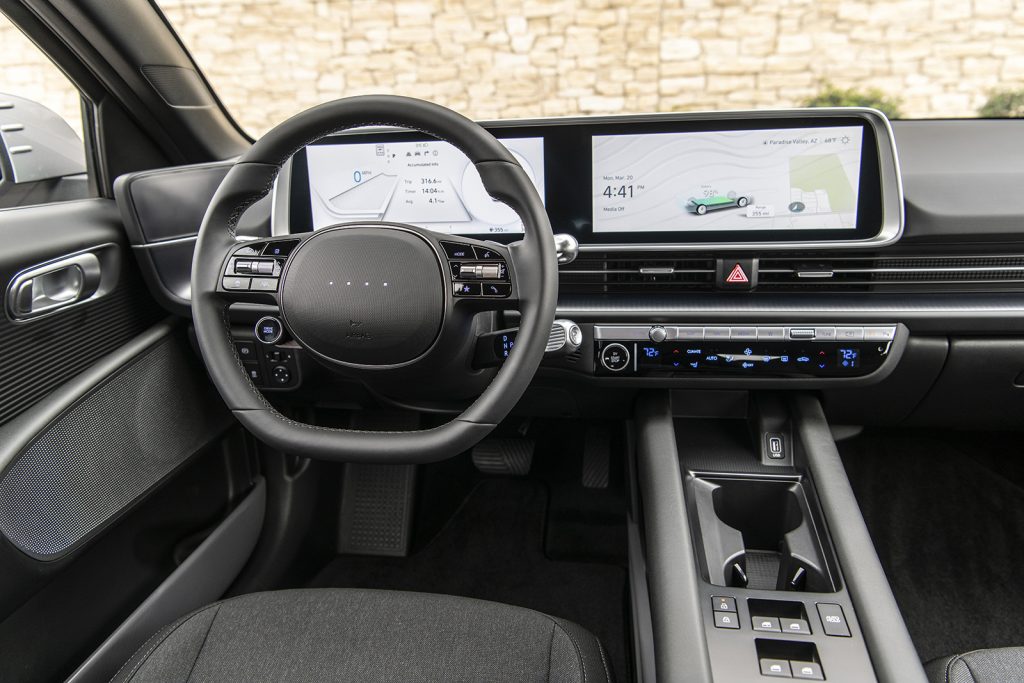Cargazing
By Derek Price
Given just how different their underlying architecture is, one would think electric cars would look dramatically different from gas-powered ones.
So far, that hasn’t been the case.
Most EVs closely mirror gasoline vehicles with the same familiar hood, fenders and trunk or hatchback that have been around since at least the 1950s. That’s in no small part to the global safety regulations that hamstring modern designers into making minor riffs on the same familiar design themes.
With the Ioniq 6, Hyundai’s newest electric vehicle, at least its designers are riffing on one of the most iconic gasoline vehicles ever made: the Porsche 911.
While none of Hyundai’s press materials make reference to it, anyone with eyeballs can see a family resemblance to the classic Porsche sports car. A sloping rear end with a whale-tail spoiler gives it the timeless silhouette of a performance machine, albeit one that burns electrons instead of hydrocarbons.

The Hyundai Ioniq 6 seems to draw at least some of its design inspiration from an iconic source: the classic Porsche 911. It’s not a perfect copycat, but it does borrow a few elements, especially on the rear end.
That look sets the tone for what the Ioniq 6 aims to become: an instant classic.
Whether it will or not is up for debate, but a week behind the wheel provides evidence that Hyundai is on the right track. If EVs are ever going to succeed in America, they need to follow the Ioniq 6’s formula of handsome looks, long driving range, neck-bending performance and a solid cabin that borders on luxurious.
Of course, not every Ioniq 6 flavor is quite that appealing. The base model, priced at $41,600, comes with a 149-horsepower motor that sends power to the rear axle and a battery good for 240 miles. I haven’t driven it, but that power number doesn’t sound very exciting.
A better value is the next step up the model ladder, the SE RWD Long Range, which comes with much more appealing range and power — 361 miles and 225 hp — for just $3,900 extra. I can’t imagine too many people buying the base version after doing the math.
The Ioniq 6 offers several other configurations of batteries, motors and equipment, all of which are capped by the version I tested, the Limited AWD with two motors that combine for 320 horses and 270 miles of range.
Priced at $56,100, or a hair over $58,000 after options that included a gorgeous matte paint coating, my tester was perhaps the best bang-for-the-buck EV I’ve ever driven.
Performance feels similar to, although not quite as violently quick, as more expensive models from Audi, BMW and Polestar. It’s also one of the best cars I’ve ever experienced for real-world charing speeds at DC fast chargers.
Like its boxier sibling, the Ioniq 5, it’s designed to handle up to 350 kW at DC fast chargers, assuming you can find one where you’re traveling. If you can, the charging speeds are lightning quick, just 18 minutes to reach 80% charge.
Granted, those 350-kW chargers are rare and in high demand, and even if you manage to pull into one it doesn’t always deliver the promised electric bandwidth. As I write this, I’m plugged into a 50-kW fast charger that takes 73 minutes to reach 80%.
As far as the car itself, I don’t think I’d change a single thing about the Ioniq 6. It’s spectacularly well executed in every way, including the powertrain choices, the infotainment technology and the cabin materials that feel bulletproof, sort of like the best Hondas do.
It’s also got one of the most intuitive and capable driver assistance systems available today. It keeps the car perfectly centered in the lane and somehow avoids the herky-jerky feeling that some radar cruise control systems suffer with. Everything about the experience feels effortless, including the brilliantly designed graphics that show the vehicle in its environment with a visual depiction of passing cars in your blind spots.
From my perspective, the only thing it lacks is the American infrastructure to support it. For people who charge in their garage and use it for local trips, it’s flawless. For people who take frequent road trips, the lack of 350-kW chargers negates one of its best selling points.
At least its buyers will be able to enjoy classically good styling while waiting for our nation to catch up.
At A Glance
What was tested? 2023 Hyundai Ioniq 6 Limited Long Range ($56,100). Options: Gravity gold paint ($1,000), carpeted floor mats ($210). Price as tested (including $1,115 destination charge): $58,425
Wheelbase: 116.1 in.
Length: 191.1 in.
Width: 74 in.
Height: 58.9 in.
Motors: Front and rear (combined 320 horsepower)
Range: 270 miles
Fuel economy: Combined 103 MPGe
Length: 191.1 in.
Width: 74 in.
Height: 58.9 in.
Motors: Front and rear (combined 320 horsepower)
Range: 270 miles
Fuel economy: Combined 103 MPGe
RATINGS
Style: 10
Performance: 9
Price: 6
Handling: 6
Ride: 8
Comfort: 8
Quality: 7
Overall: 8
Performance: 9
Price: 6
Handling: 6
Ride: 8
Comfort: 8
Quality: 7
Overall: 8
Why buy it?
With great looks, ultra-fast charging capability, long range and strong performance, the Ioniq 6 is one of the best electric vehicles for sale today.

